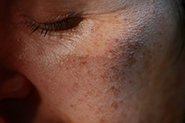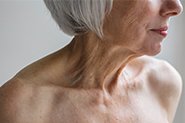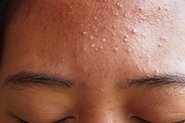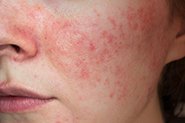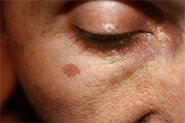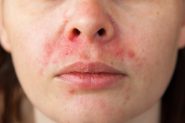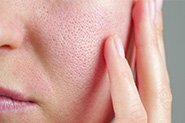
Qr8’s Founder, Dr Michele Squire answers the burning questions about LED light therapy for skin (and whether you actually NEED an at-home treatment!)
What is LED?
LED therapy has been around since 1960s when NASA developed the light emitting diode as an alternative to laser, to help heal wounds in zero gravity situations. The technology only became clinically useful in the 90s, with the first report of actual clinical use in 2002.
Light Emitting Diodes (LEDs) convert electrical current into light of varying wavelengths. This light is absorbed by enzymes within cell membranes and mitochondria, selectively stimulating or inhibiting various cellular processes that lead to beneficial effects (technical term: ‘photobiomodulation’).
LEDs are NOT laser or IPL, although they can deliver the same wavelengths of light. LEDs are also non-thermal, meaning that heat doesn’t equal photobiomodulation.
What can LED therapy do?
Multiple good quality scientific studies have demonstrated that in-clinic LED, delivered at professional intensity and dose levels, and very specific wavelengths that target different depths in the skin, can have beneficial effects. This includes improvements in wrinkles, acne lesions & scars, wound healing, hair growth, and reducing sun damage. The effects are greater when lights are ‘pulsed’ rather than continuous. These studies all show that multiple treatment sessions are required, often as many as 8 treatments over 4 weeks, depending on the machine. Results don’t peak for 4-6 months after the series of treatments.
When it comes to treating sun damaged skin, don’t expect miracles with LED therapy alone – it’s best when used in combination with other treatments. Tretinoin + sun protection is still the gold standard topical treatment for preventing and repairing signs of ageing associated with sun damage (rough, dry, wrinkled, saggy skin with uneven texture and tone, and enlarged pores).
Are LED devices safe?
LEDs are considered safe, and the lack of heat means they don’t need to damage skin to achieve results. But if you are taking photosensitizing medications (there’s a great list, HERE), or have a photosensitive skin condition (like lupus or melasma), epilepsy/seizures, or photophobic conditions (like migraine or some eye conditions), LED technology isn’t for you.
What about at-home devices?
Professional in-clinic devices have thousands of diodes, arranged on an adjustable panel that is positioned close to the face. Because of the density of the diodes, and the intensity of the delivered light (something called ‘irradiance’), they deliver a lot of energy to the skin. They can be programmed to deliver a single wavelength of light or cycle through a variety of wavelengths in a single session, targeting multiple concerns at once (e.g. acne lesions, scars and inflammation, which all require different wavelengths with different cellular targets).
Home devices, with a hundred or fewer diodes, often arranged in a hands-free mask (but also sometimes a hand-held device), are less powerful, both in terms of diode density and irradiance. Unfortunately, they also have very little scientific evidence about their effectiveness. You can read more about the evidence that exists for these devices HERE.
At this stage, the lack of any good quality evidence means you can save your money on at-home LED masks (but we are hopeful that some good quality, independent, clinical trials will be done as these devices become more popular!). If you do plan on purchasing one of these, remember that the lower power means you will need to use it much more often than the in-clinic version, so don’t bother buying one if you’re not the type of person to commit to using it very regularly. And do your research by emailing companies about the output of their masks – the price point for the masks is steep, and price (as you already know!) doesn’t always equate to quality!
What about those facial wands that are all over your social feed?
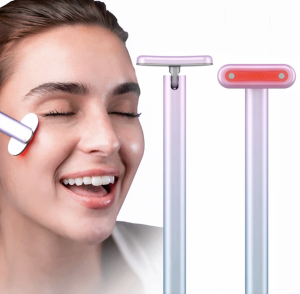
These tiny devices only have a handful of diodes (less than 5), and you need to repeatedly move the wand around your face to deliver any light to your skin. The claims made about benefits for these devices are sometimes pretty wild, and commonly based on the studies performed using powerful professional-grade devices. Common sense says there is pretty much zero chance that these devices could deliver an effective amount of energy to the skin to achieve anything close to a beneficial effect. Definitely one to save your money on!
Qr8 is known and loved for our skincare myth busting! To read more about evidence-based skincare CLICK HERE.
REFERENCES
- Avci P, Gupta A, et al. Low-level laser (light) therapy (LLLT) in skin: stimulating, healing, restoring. Semin Cutan Med Surg. 2013. 32(1):41-52. PMID: 24049929.
- Calderhead RG. The photobiological basics behind light-emitting diode (LED) phototherapy. Laser Therapy. 2007;16(2):97-108.
- Cohen M, Austin E, et al. Home-based devices in dermatology: a systematic review of safety and efficacy. Arch Dermatol Res. 2022. 314(3):239-246. PMID: 33938981.
- Hession MT, Markova A, Graber EM. A review of hand-held, home-use cosmetic laser and light devices. Dermatol Surg. 2015. 41:307-20. PMID: 25705949.
- Ngoc LTN, Moon JY, Lee YC. Utilization of light-emitting diodes for skin therapy: Systematic review and meta-analysis. Photodermatol Photoimmunol Photomed. 2022 Oct 31. doi: 10.1111/phpp.12841. Epub ahead of print. PMID: 36310510.
- Opel DR, Hagstrom E, et al. Light-emitting Diodes: A Brief Review and Clinical Experience. J Clin Aesthet Dermatol. 2015. 8(6):36-44. PMID: 26155326.
- Pitassi, L. 2018. Light-Emitting Diode for Acne, Scars, and Photodamaged Skin. In: Lasers, Lights and Other Technologies (Issa, MCA & Tamura, B, eds). Springer, Cham. ISSN: 2511-820X.
WOULD YOU LIKE TO CHAT TO ONE OF OUR FRIENDLY DOCTORS ABOUT YOUR SKIN CONDITION?
CLICK HERE TO BOOK A CONSULT WITH OUR EXPERIENCED MEDICAL TEAM.


